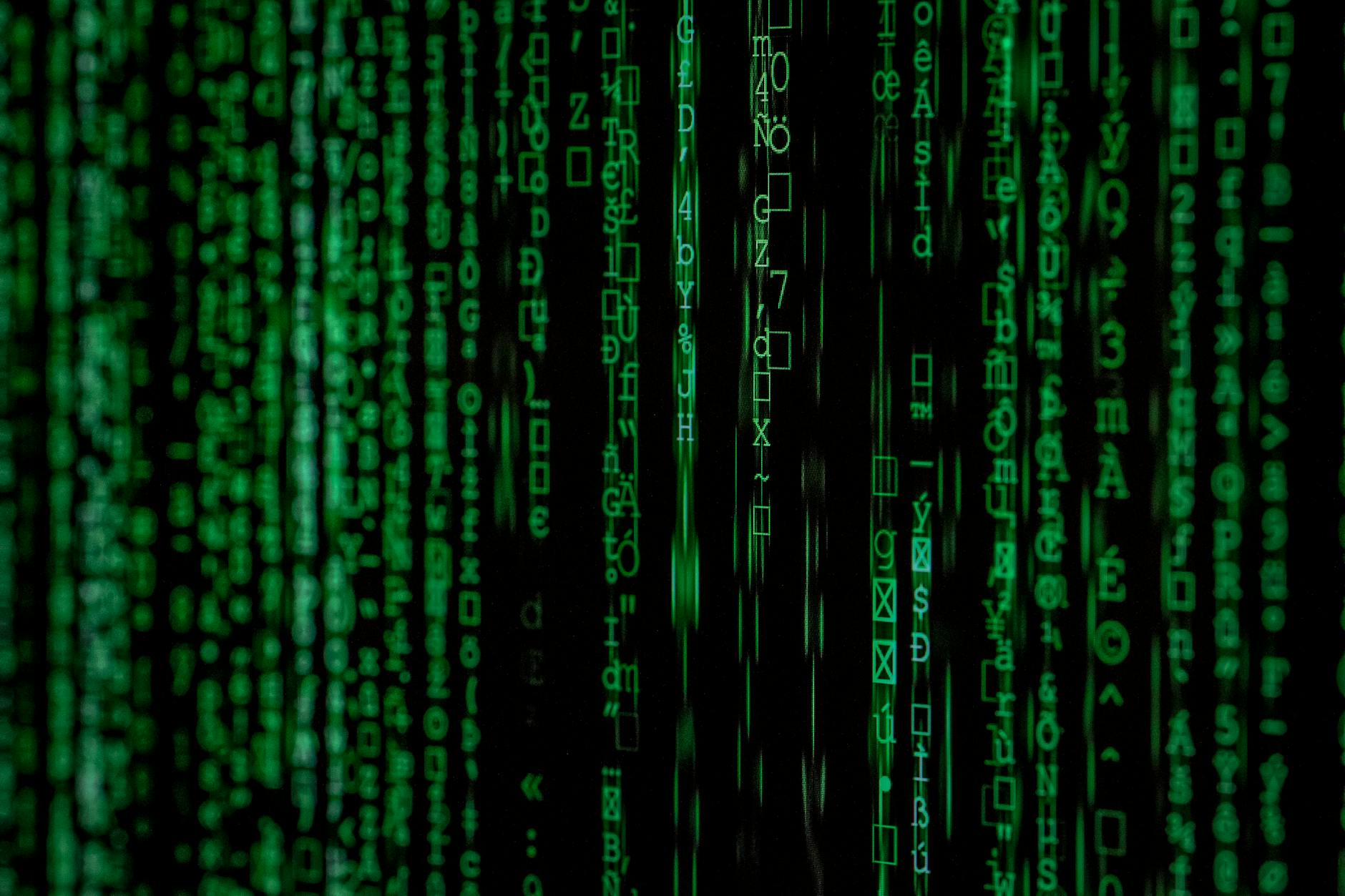The Matrix Movies in Order: 5 Must-Watch Films for Fans
Navigate the digital realm with our comprehensive guide to watching The Matrix movie series in perfect sequence

The Matrix Movies in Order: Your Complete Guide to the Franchise
The Matrix franchise stands as one of the most influential sci-fi series in cinema history, blending groundbreaking visual effects with profound philosophical questions about reality and existence. Since the release of the original film in 1999, the series has expanded to include multiple sequels, an animated anthology, and various other media that have deepened and enriched the universe created by the Wachowskis. For newcomers to the franchise or fans looking to revisit this digital world, understanding the correct viewing order can enhance the experience and provide better context for the complex narrative that unfolds across multiple films.
This comprehensive guide will walk you through The Matrix movies in both release order and chronological order, offering insights into each entry in this revolutionary franchise. Whether you’re preparing for your first journey down the rabbit hole or returning to the digital realm, this article will serve as your guide to navigating the world of The Matrix.
The Matrix Movies in Release Order
For first-time viewers, watching the Matrix movies in their original release order provides the experience as the filmmakers intended, with each entry building upon the foundations laid by its predecessors. Here’s the complete release order for the main Matrix franchise:
- The Matrix (1999)
- The Matrix Reloaded (2003)
- The Animatrix (2003)
- The Matrix Revolutions (2003)
- The Matrix Resurrections (2021)
This viewing order allows audiences to experience the evolution of both the storytelling and the groundbreaking visual effects that defined the series, from the revolutionary bullet-time sequences of the original to the expanded world-building of the later entries.
1. The Matrix (1999)
The film that started it all, The Matrix introduced audiences to a dystopian future where humanity is unknowingly trapped inside a simulated reality called the Matrix, created by intelligent machines to distract humans while using their bodies as an energy source. The story follows Thomas Anderson, a computer programmer known by his hacker alias Neo (Keanu Reeves), who is drawn into a rebellion against the machines when he is contacted by the mysterious Morpheus (Laurence Fishburne).
After being offered the choice between a blue pill (returning to his previous life of ignorance) and a red pill (learning the truth about reality), Neo chooses the red pill and discovers the horrifying truth about the world. He joins Morpheus and Trinity (Carrie-Anne Moss) in their fight against the machines and their virtual enforcers, particularly the menacing Agent Smith (Hugo Weaving). As Neo begins to understand his potential as “The One” – a prophesied individual who can manipulate the Matrix – he embarks on a journey of self-discovery and resistance against machine control.
The Matrix was revolutionary for its time, combining cutting-edge visual effects with influences from anime, martial arts films, cyberpunk fiction, and philosophy. The film’s exploration of concepts like simulation theory, existentialism, and the nature of reality resonated with audiences and critics alike, establishing the franchise as a thought-provoking sci-fi milestone.
Key Cast:
- Keanu Reeves as Neo
- Laurence Fishburne as Morpheus
- Carrie-Anne Moss as Trinity
- Hugo Weaving as Agent Smith
2. The Matrix Reloaded (2003)
Set six months after the events of the original film, The Matrix Reloaded continues the story as Neo, Trinity, and Morpheus lead the human resistance against the machines. The film expands the universe significantly, introducing viewers to Zion, the last human city located near the Earth’s core, and delving deeper into the mythology and rules of the Matrix itself.
As the machine army of Sentinels approaches Zion with plans to destroy it within 72 hours, Neo must navigate both the real world and the Matrix to prevent this catastrophe. Meanwhile, Agent Smith, no longer connected to the machine mainframe, has become a rogue program with the ability to replicate himself by overwriting other programs or humans connected to the Matrix.
The film introduces new characters like the Merovingian, Persephone, and the Architect, who reveals to Neo that the Matrix has gone through multiple iterations and that Neo himself is part of its system of control. This revelation forces Neo to question his role as The One and make difficult choices about the future of humanity.
The Matrix Reloaded significantly upped the ante on action sequences, featuring elaborate fight scenes and chase sequences that pushed the boundaries of visual effects at the time. The philosophical elements also became more complex, exploring determinism, choice, and the nature of control systems.
Key Cast:
- Keanu Reeves as Neo
- Laurence Fishburne as Morpheus
- Carrie-Anne Moss as Trinity
- Hugo Weaving as Agent Smith
3. The Animatrix (2003)
Released between The Matrix Reloaded and The Matrix Revolutions, The Animatrix is a collection of nine animated short films set in the Matrix universe. This anthology provides essential background information on the world of The Matrix, exploring the history of the conflict between humans and machines, as well as personal stories of individuals affected by the Matrix system.
The most significant entries in terms of the main narrative are “The Second Renaissance” parts I and II, which detail the origins of the war between humans and machines, showing how mankind’s mistreatment of increasingly intelligent machines led to conflict and eventually to the creation of the Matrix itself. “Final Flight of the Osiris” serves as a direct prequel to The Matrix Reloaded, depicting the discovery of the machines’ drilling operation that threatens Zion.
Other stories like “Kid’s Story” connect directly to characters seen in the sequels, while standalone tales like “World Record,” “Beyond,” and “Matriculated” explore different aspects of how the Matrix affects ordinary people and how some individuals can sense or even break free from its illusions without being formally “unplugged.”
The Animatrix showcases various animation styles from renowned anime directors and studios, bringing different visual interpretations to the Matrix universe while expanding its thematic and narrative scope. For fans of the franchise, these shorts provide valuable context that enriches the viewing of the main films.
Notable Shorts:
- The Second Renaissance Part I & II
- Final Flight of the Osiris
- Kid’s Story
- Program
- World Record
- Beyond
- A Detective Story
- Matriculated
4. The Matrix Revolutions (2003)
Concluding the original trilogy, The Matrix Revolutions picks up immediately after the events of Reloaded, with Neo trapped in a limbo state between the real world and the Matrix, and the city of Zion preparing for the imminent machine invasion. As the Sentinels draw closer to breaching Zion’s defenses, Neo must find his way back and determine how to end the war.
The film follows two main storylines: the battle for Zion, where the remaining humans fight desperately against the machine forces using mechanized combat suits, and Neo’s journey to the machine city to confront the source of the conflict. Meanwhile, Agent Smith’s power continues to grow as he completely takes over the Matrix, threatening both the machines’ control system and the humans connected to it.
The Matrix Revolutions builds to a climactic confrontation between Neo and Smith, resulting in a resolution that brings a temporary peace between humans and machines. The film tackles themes of sacrifice, purpose, and symbiosis, suggesting that cooperation between different forms of intelligence might be possible despite their violent history.
While some viewers found the conclusion controversial, The Matrix Revolutions completed the thematic arc of the trilogy by focusing on the balance between opposing forces and the potential for evolution in both human and machine societies.
Key Cast:
- Keanu Reeves as Neo
- Laurence Fishburne as Morpheus
- Carrie-Anne Moss as Trinity
- Hugo Weaving as Agent Smith
- Jada Pinkett Smith as Niobe
5. The Matrix Resurrections (2021)
Nearly two decades after the conclusion of the original trilogy, The Matrix Resurrections reintroduces audiences to the world of the Matrix with a meta-aware approach that acknowledges both the legacy of the franchise and the changes in technology and society since the original films.
The story follows Thomas Anderson, now a successful video game designer known for creating a trilogy of games called “The Matrix” based on fragmented memories of his past life. Prescribed blue pills by his therapist to keep these “delusions” at bay, Anderson encounters a new version of Morpheus and a group of rebels who once again help him see beyond the simulation.
As Neo rediscovers his identity and reunites with Trinity (who lives within the Matrix as Tiffany), he learns that the Matrix has been redesigned and that the machines have evolved and factioned since his sacrifice. Some machine entities now seek alliance with humans, while others maintain the old order. The film explores themes of recursion, reboots, and the power of connection, particularly the relationship between Neo and Trinity as a force that can change both worlds.
Directed solely by Lana Wachowski (without her sister Lilly), The Matrix Resurrections takes a more self-referential approach than its predecessors, commenting on nostalgia, sequels, and the commercialization of revolutionary ideas, while still delivering the action and philosophical questions that defined the original trilogy.
Key Cast:
- Keanu Reeves as Neo/Thomas Anderson
- Carrie-Anne Moss as Trinity/Tiffany
- Yahya Abdul-Mateen II as Morpheus
- Jessica Henwick as Bugs
- Jonathan Groff as Smith
- Neil Patrick Harris as The Analyst
Watching The Matrix Movies in Chronological Order
For those interested in experiencing the complete narrative of The Matrix universe in chronological order, the viewing sequence would differ from the release order. A chronological viewing would begin with the historical background provided in The Animatrix before moving to the main films:
- The Animatrix: The Second Renaissance Parts I & II
- The Animatrix: A Detective Story
- The Matrix
- The Animatrix: Kid’s Story
- The Animatrix: Final Flight of the Osiris
- The Matrix Reloaded
- The Matrix Revolutions
- The Matrix Resurrections
The remaining Animatrix shorts (Program, World Record, Beyond, and Matriculated) can be viewed between Reloaded and Revolutions, as they expand on the world without directly connecting to the main plot timeline.
The Legacy of The Matrix Franchise
The Matrix franchise has had an immeasurable impact on popular culture, filmmaking techniques, and science fiction storytelling. The original film’s innovative “bullet time” effect revolutionized visual effects, while its blend of cyberpunk aesthetics, martial arts, and philosophical themes influenced countless films, games, and other media that followed.
Beyond its technical achievements, the franchise’s exploration of simulation theory, questioning reality, and the relationship between humans and technology has only become more relevant in the digital age. The concept of “taking the red pill” has entered the cultural lexicon as a metaphor for awakening to hidden truths, while the image of the green code cascading down a black screen has become instantly recognizable even to those who haven’t seen the films.
As technology continues to advance with developments in virtual reality, artificial intelligence, and increasingly immersive digital worlds, The Matrix’s themes and warnings remain prescient, ensuring the franchise’s continued relevance and influence on how we think about our relationship with technology and reality itself.
Frequently Asked Questions (FAQs)
Q: Do I need to watch The Animatrix to understand the main Matrix films?
A: While The Animatrix provides valuable background information and context, it’s not strictly necessary to understand the main plot of the trilogy. However, watching it enhances the experience by filling in details about the world and some character backstories.
Q: Is The Matrix Resurrections a direct continuation of the original trilogy?
A: Yes, The Matrix Resurrections takes place after the events of the original trilogy, though many years have passed both in the story world and in real life. It acknowledges the events of the previous films while taking the narrative in new directions.
Q: Why were The Matrix Reloaded and Revolutions released in the same year?
A: The sequels were filmed back-to-back as part of a single production, allowing them to be released just six months apart in 2003. This approach was chosen to maintain continuity and momentum in telling the complete story.
Q: Are there plans for more Matrix films?
A: While there have been rumors about potential future installments, no official announcements have been made regarding additional Matrix films as of mid-2025. The franchise continues to exist in other media such as comics and games.
Q: What’s the best way to watch The Matrix for the first time?
A: For first-time viewers, the release order is generally recommended, starting with the 1999 original film. This allows you to experience the story as it was originally presented and follow the evolution of both the narrative and the visual effects.
References
- https://www.space.com/the-matrix-movies-in-order
- https://en.wikipedia.org/wiki/The_Matrix_(franchise)
- https://collider.com/the-matrix-movies-in-order-how-to-watch/
- https://www.ign.com/articles/how-to-watch-the-matrix-movies-in-chronological-order
- https://www.warnerbros.co.uk/news/articles/2024/04/04/matrix-movies-chronological-timeline
Read full bio of Shinta
















Community Experiences
Join the conversation and become a part of our empowering community! Share your stories, experiences, and insights to connect with other beauty, lifestyle, and health enthusiasts.